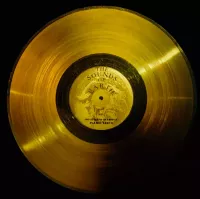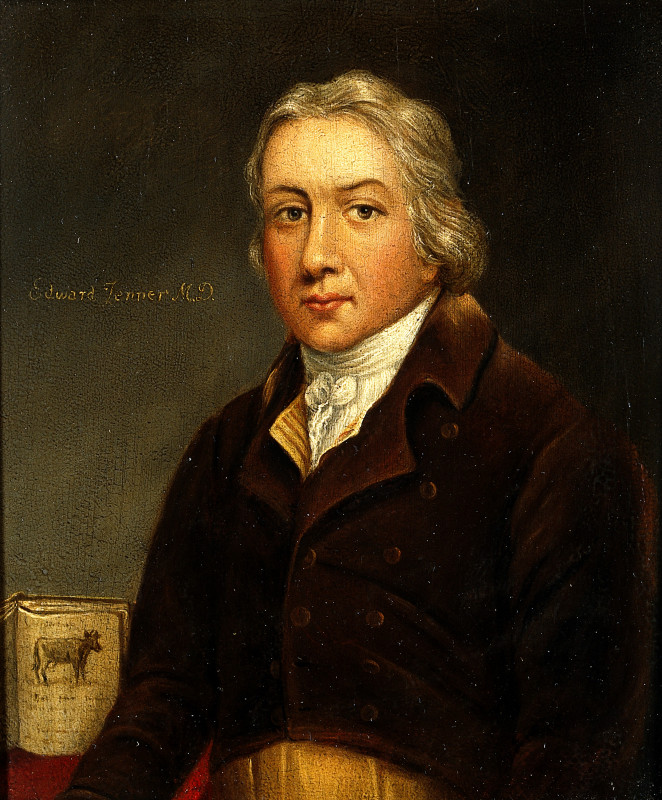Autism spectrum disorder (ASD) is a neurodevelopmental condition characterized by challenges in social interaction, communication, and the presence of repetitive behaviors or restricted interests. Sensory processing differences and motor coordination difficulties may also be present. ASD traits exist on a spectrum, varying in severity and impacting individuals differently, from non-speaking to verbally proficient. Diagnosis requires significant functional difficulties and behaviors atypical for the individual's age and sociocultural context.
1912: Coining of the term "Autismus"
In 1912, Swiss psychiatrist Paul Bleuler coined the German term "Autismus", later translated to "autism" in English, to convey "morbid self-absorption."
1963: British National Autistic Society Logo
In 1963, the British National Autistic Society adopted a puzzle piece as its logo, designed by Gerald Gasson, featuring a crying child, due to its view of autistic people as suffering from a "puzzling" condition.
1980: Collaborative work towards convergence of the ICD and DSM
Since 1980, when DSM-III was published and ICD-9 was current, collaborative work has been in place toward a convergence of the ICD and the DSM, including more rigorous biological assessment and a simplification of the classification system.
1994: US special-education autism classification introduced
In 1994, the U.S. special-education autism classification was introduced.
1998: Wakefield's fraudulent study linking MMR vaccine to autism
In 1998, British physician Andrew Wakefield led a fraudulent study suggesting the MMR vaccine may cause autism. His co-authors have since recanted the claims made in the study.
1998: Autism diagnoses increase begins
In 1998, autism diagnoses in the UK began a significant increase that would continue until 2018, rising by 787%.
1999: Puzzle Ribbon
In 1999, the Autism Society designed the puzzle ribbon (an awareness ribbon patterned with red, yellow, cyan, and blue puzzle pieces) as a symbol of autism awareness.
2000: ASD rate reported at 1 in 150
In 2000, the ASD rate was reported as 1 in 150.
2000: Records began being kept for diagnosed ASD in the US
In the US, the rates for diagnosed ASD have been steadily increasing since 2000 when records began being kept.
2004: Rainbow Infinity Symbol
In 2004, neurodiversity advocates Amy and Gwen Nelson designed the "rainbow infinity symbol", originally as the logo for their advocacy group Aspies For Freedom as a symbol for the autism spectrum.
2005: Creation of Autistic Pride Flag
In 2005, Aspies For Freedom created an autistic pride flag featuring a rainbow infinity symbol on a white background for the first Autistic Pride Day.
2005: Botched chelation therapy death
In 2005, botched chelation therapy killed a five-year-old child with autism. Chelation is not recommended for autistic people since the associated risks outweigh any potential benefits.
2006: ASD rate reported at 1 in 110
In 2006, the ASD rate was reported as 1 in 110, a 105% increase from the 1 in 150 rate in 2000.
2007: "Light It Up Blue" awareness campaign launched
In 2007, Autism Speaks launched the "Light It Up Blue" awareness campaign.
2011: ASD rates between 2011 and 2014
ASD rates were constant between 2014 and 2016 but twice the rate compared to the time period between 2011 and 2014 (1.25 vs 2.47%).
2011: Solitary Forager Hypothesis
In 2011, a paper in Evolutionary Psychology proposed that autistic traits, including increased spatial intelligence, concentration and memory, could have been naturally selected to enable self-sufficient foraging in a more solitary environment. This is called the "Solitary Forager Hypothesis".
2011: Autism Acceptance Month
Since 2011, the Autistic Self Advocacy Network has celebrated April as Autism Acceptance Month.
2012: Double empathy problem theory
In 2012, the "double empathy problem" theory argues that there is a lack of mutual understanding and empathy between both non-autistic persons and autistic individuals.
2012: NHS estimated the overall prevalence of autism among adults aged 18 years and over in the UK was 1.1%
In 2012, the NHS estimated that the overall prevalence of autism among adults aged 18 years and over in the UK was 1.1%.
2012: WHO estimates of autism prevalence
In 2012, the World Health Organization (WHO) estimated that approximately 1 in 100 children were diagnosed with autism, and this estimate remained consistent until 2021, showing a trend of increasing diagnoses over time.
2012: WHO estimates about 1 in 100 children had autism
The World Health Organization estimates about 1 in 100 children had autism during the period from 2012 to 2021 as that was the average estimate in studies published during that period with a trend of increasing prevalence over time.
May 2013: Release of DSM-5
In May 2013, the fifth edition of the Diagnostic and Statistical Manual of Mental Disorders (DSM-5) was released, defining ASD as a single diagnosis and adopting a dimensional approach to symptom severity.
2013: Adoption of DSM-5 diagnostic manual
In 2013, the DSM-5 diagnostic manual was adopted, placing ASD under the diagnostic category of pervasive developmental disorder and taking a spectrum approach. This new system is more restrictive, meaning fewer people qualify for diagnosis.
2013: Changes to domains considered for autism diagnosis
Until 2013, difficulties in social function and communication were considered two separate domains. Currently, the social communication domain criteria for autism diagnosis require difficulties across three social skills: social-emotional reciprocity, nonverbal communication, and developing and sustaining relationships.
2014: Constant ASD rates between 2014 and 2016
ASD rates were constant between 2014 and 2016 but twice the rate compared to the time period between 2011 and 2014 (1.25 vs 2.47%).
2014: Meta-analysis disproves vaccine-autism link
In 2014, a meta-analysis examined ten major studies on autism and vaccines involving 1.25 million children worldwide. It concluded that neither thimerosal (mercury) nor the MMR vaccine lead to ASDs. Despite this, misplaced parental concern has led to lower rates of childhood immunizations and outbreaks of previously controlled childhood diseases in some countries.
2014: ASD rate reported at 1 in 59
In 2014, the ASD rate was reported as 1 in 59, a 10% increase from the 1 in 110 rate in 2006.
October 2015: AAP proposes new evidence-based recommendations for early interventions in ASD for children under 3
In October 2015, the American Academy of Pediatrics (AAP) proposed new evidence-based recommendations for early interventions in ASD for children under 3. These recommendations emphasize early involvement with both developmental and behavioral methods, support by and for parents and caregivers, and a focus on both the core and associated features of ASD.
2015: Autistic Pride Design by Joseph Redford
In 2015, Joseph Redford created an autistic pride design featuring a rainbow infinity symbol, a green background for being true to one's nature, and a purple background for neurodiversity.
2015: Publication of NeuroTribes
In 2015, Steve Silberman's book NeuroTribes highlights the emergence of online communities centered around autistic people, such as Autism Network International and Wrong Planet.
2015: Review of Early Childhood Interventions
In 2015, a review deemed two early childhood interventions "well-established": individual comprehensive ABA and focused teacher-implemented ABA combined with DSP.
2015: CDC estimates on non-speaking autistic children
In 2015, the CDC estimated that around 40% of autistic children do not speak at all.
2016: Asperger syndrome as an alternative prosocial adaptive strategy
In 2016, a paper examines Asperger syndrome as "an alternative prosocial adaptive strategy" that may have developed as a result of the emergence of "collaborative morality" in the context of small-scale hunter-gathering, i.e., where "a positive social reputation for making a contribution to group wellbeing and survival" becomes more important than complex social understanding.
2016: Survey in the United States reported a rate of 25 per 1,000 children for ASD
In 2016, a survey in the United States reported a rate of 25 per 1,000 children for ASD.
2016: Data collected for CDC report of 1 in 54 children diagnosed with ASD
In 2020, the Centers for Disease Control's Autism and Developmental Disabilities Monitoring (ADDM) Network reported that approximately 1 in 54 children in the United States (1 in 34 boys, and 1 in 144 girls) is diagnosed with an autism spectrum disorder (ASD), based on data collected in 2016.
June 2018: Release of the ICD-11
In June 2018, the World Health Organization released the International Classification of Diseases (11th revision), ICD-11, describing ASD.
2018: Heritability of ASD likelihood
As of 2018, it appeared that between 74% and 93% of ASD likelihood is heritable.
2018: Gluten- and casein-free diet for autism
As of 2018, there is no good evidence to recommend a gluten- and casein-free diet as a standard intervention for autistic people. A 2018 review concluded that it may be a therapeutic option for specific groups of children with autism, such as those with known food intolerances or allergies, or with food intolerance markers.
2018: Autism diagnoses increase peaks
By 2018, autism diagnoses in the UK had increased by 787% since 1998, an increase largely due to changes in diagnostic practices, referral patterns, service availability, age at diagnosis, and public awareness, particularly among women. Environmental factors are also considered. In 2018, Julian Morgan also wrote the article "Light It Up Gold", a response to Autism Speaks' "Light It Up Blue" awareness campaign.
2018: "Light It Up Gold" article
In 2018, Julian Morgan wrote the article "Light It Up Gold", a response to Autism Speaks' "Light It Up Blue" awareness campaign. Morgan pushed to use gold to symbolize autism, due its chemical symbol Au, from the Latin Aurum.
2018: Cochrane meta-analysis database about ABA teaching approaches
In 2018, a Cochrane meta-analysis database concluded that some recent research is beginning to suggest that because of the heterology of ASD, there are two different ABA teaching approaches to acquiring spoken language: children with higher receptive language skills respond to 2.5 to 20 hours per week of the naturalistic approach, whereas children with lower receptive language skills require 25 hours per week of discrete trial training—the structured and intensive form of ABA.
2018: Genetic Factors Influencing Autism
In 2018, the understanding of genetic factors influencing autism shifted to a diffuse model, involving a large number of variants with varying effects, some common and some rare. Impactful rare variants in the CHD8 gene are the most commonly noted among autistic individuals, they are present in less than 0.5% of autistic people.
2019: Meta-analysis on depression in autistic people
A 2019 meta-analysis found autistic people to be four times more likely to have depression than non-autistic people, with approximately 40% of autistic adults having depression.
2019: Canadian meta-analysis confirming effects of autistic people becoming less different from general population
In 2019, a Canadian meta-analysis confirmed these effects as the profiles of autistic people became less and less different from the profiles of the general population.
2019: Research on autistic-autistic interactions
In 2019, research found that autistic–autistic interactions are as effective in information transfer as interactions between non-autistics are, and that communication breaks down only between autistics and non-autistics.
2020: Mindfulness-based interventions and adults with autism
In 2020, a systematic review on adults with autism provided evidence that mindfulness-based interventions may decrease stress, anxiety, ruminating thoughts, anger, and aggression and improve mental health.
2020: CDC reports 1 in 54 children in the US diagnosed with ASD
In 2020, the Centers for Disease Control's Autism and Developmental Disabilities Monitoring (ADDM) Network reported that approximately 1 in 54 children in the United States (1 in 34 boys, and 1 in 144 girls) is diagnosed with an autism spectrum disorder (ASD), based on data collected in 2016.
2021: Autism Awareness Day retitled
In 2021, the Autism Society of America urged organizations to retitle Autism Awareness Day as Autism Acceptance Day, to focus on integrating those with autism into society.
2021: WHO estimates of autism prevalence
In 2021, the World Health Organization (WHO) estimated that approximately 1 in 100 children were diagnosed with autism between 2012 and 2021, with a trend of increasing diagnoses over time. This increasing prevalence has contributed to the myth perpetuated by anti-vaccine activists that autism is caused by vaccines.
2021: WHO estimates about 1 in 100 children had autism
The World Health Organization estimates about 1 in 100 children had autism during the period from 2012 to 2021 as that was the average estimate in studies published during that period with a trend of increasing prevalence over time.
January 2022: ICD-11 comes into full effect
In January 2022, the World Health Organization's International Classification of Diseases (11th revision), ICD-11, came into full effect.
2022: Systematic review on autism, internet use, and gaming disorder
A 2022 systematic review of 21 studies found that most studies reported moderate correlations between autism, problematic internet use, and gaming disorder.
2022: DSM-5-TR criteria for diagnosing ASD
According to the DSM-5-TR (2022), in order to receive a diagnosis of autism spectrum disorder, one must present with "persistent deficits in social communication and social interaction" and "restricted, repetitive patterns of behavior, interests, or activities".
2022: Music Therapy and autistic people
An updated Cochrane review (2022) found evidence that music therapy likely supports the development of skills in social interaction, verbal communication, and nonverbal communication.
2022: Release of the DSM-5-TR
In 2022, the American Psychiatric Association released the Diagnostic and Statistical Manual of Mental Disorders, Fifth Edition, Text Revision (DSM-5-TR), the current version of the DSM used predominantly in the United States and Canada, and often in Anglophone countries.
2023: Alternative research approaches for ASD criteria
As of 2023, research highlights how established ASD criteria may be ineffective descriptors of autism as a whole, encouraging alternative research approaches. There are proposed alternatives to the current disorder-focused spectrum model that deconstruct autism into separate phenomena.
2023: The Suicidal Behaviours Questionnaire–Autism Spectrum Conditions (SBQ-ASC) validation
As of 2023, the Suicidal Behaviours Questionnaire–Autism Spectrum Conditions (SBQ-ASC) is the only test validated for autistic people.
2023: Multi-site randomized control trial study about ABA teaching approaches
In 2023, a multi-site randomized control trial study of 164 participants showed similar findings related to Cochrane meta-analysis database that concluded some recent research is beginning to suggest that because of the heterology of ASD, there are two different ABA teaching approaches to acquiring spoken language.
2023: Autistic Pride Design Featured
In 2023, the People's History Museum featured a 2015 autistic pride design by Joseph Redford, featuring a rainbow infinity symbol, a green background for being true to one's nature, and a purple background for neurodiversity.
2024: ICD-11 CDDR diagnostic manual adoption
In 2024, the ICD-11 CDDR diagnostic manual was adopted, placing ASD under the diagnostic category of pervasive developmental disorder and taking a spectrum approach. This new system is more restrictive, meaning fewer people qualify for diagnosis.
Mentioned in this timeline
The United States of America is a federal republic located...

The World Health Organization WHO is a specialized agency of...

Music is a cultural universal involving the arrangement of sound...

A video game is an electronic game involving user interaction...

September is the ninth month of the year in the...

A vaccine is a biological preparation designed to provide active...
Trending

17 days ago Marco Rubio's Venezuela Stance: War Sales Pitch and Social Media Influence Examined

4 months ago Texas AG probes Xcel Energy over ESG, DEI links to 2024 wildfires.

2 months ago Rivian Announces Layoffs of Over 600 Workers Amid Electric Vehicle Market Slowdown

5 months ago Paul Rudd Stars in New Dark Comedy with Tim Robinson; Friendship Explored
1 month ago Rocket Lab's Q3 2025 Results: Record Revenue Growth Fuels Stock Surge.

9 months ago Pandya's IPL 2025 Season Begins Amidst Dhoni's Stumping and Sharma's Milestone.
Popular

Candace Owens is an American conservative political commentator and author...

Tucker Carlson is an American conservative political commentator known for...

XXXTentacion born Jahseh Dwayne Ricardo Onfroy was a controversial yet...

Ilhan Omar is an American politician currently serving as the...

Kashyap Pramod Patel is an American lawyer who became the...

Bill Gates an American businessman and philanthropist revolutionized personal computing...
